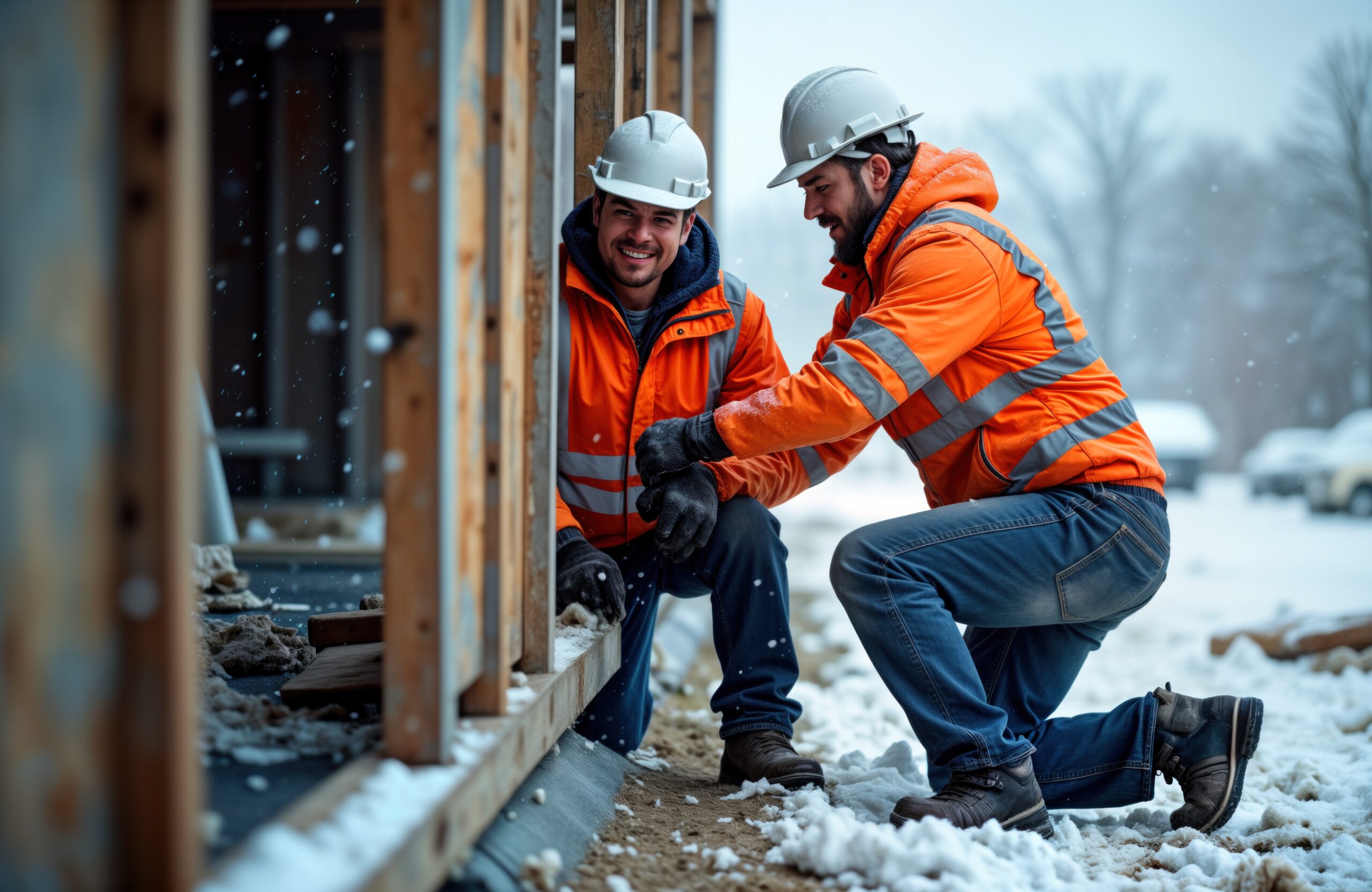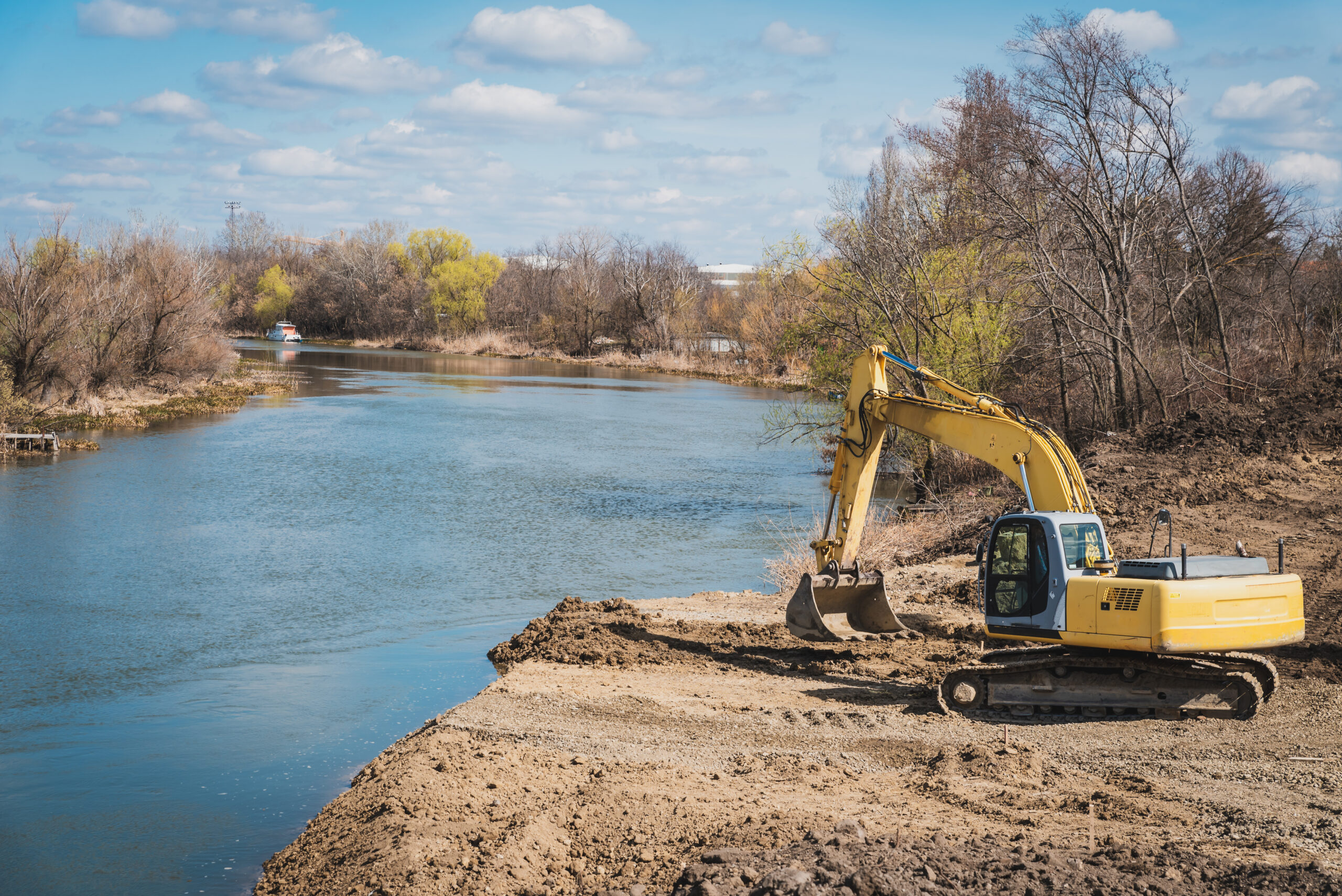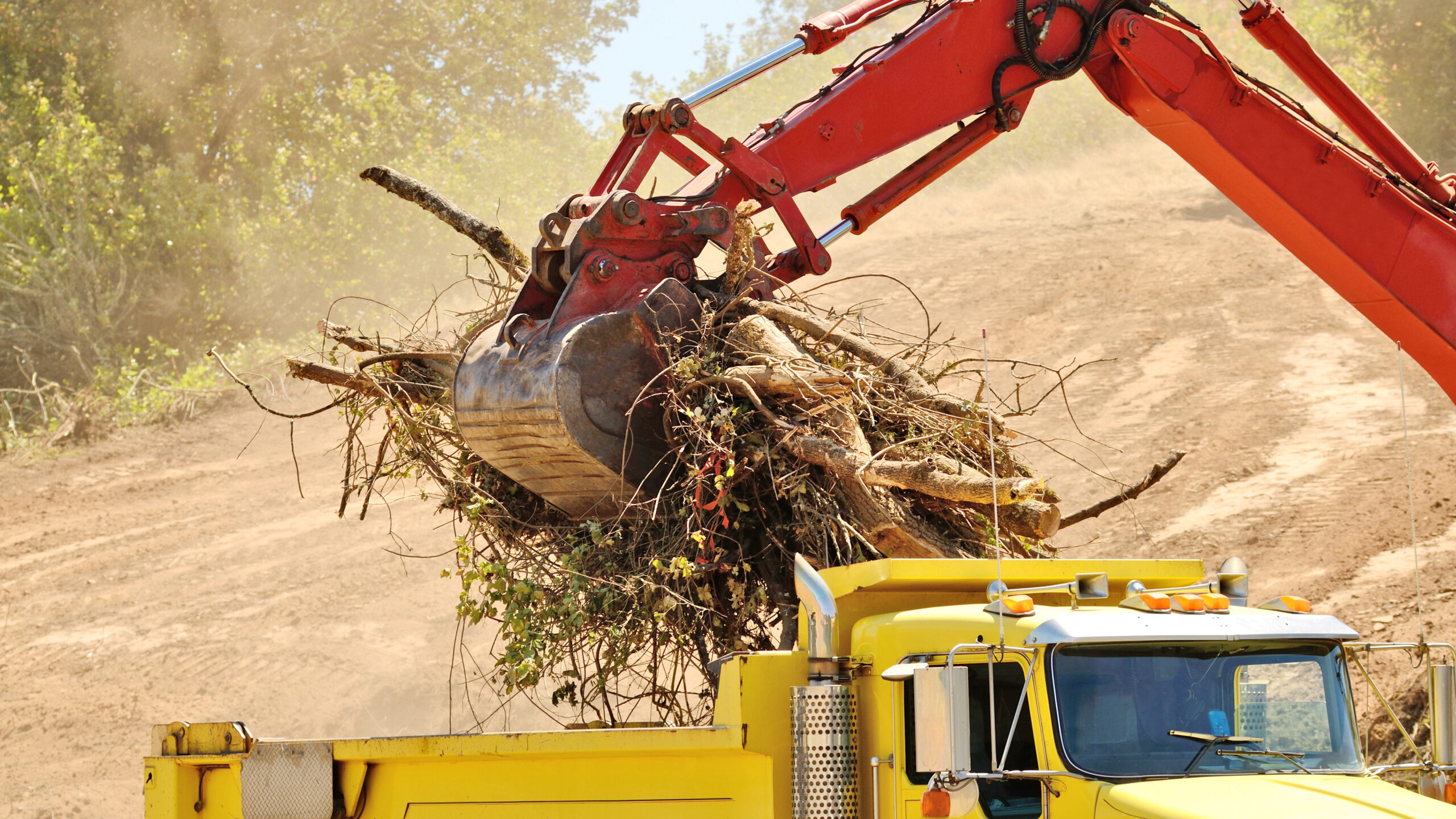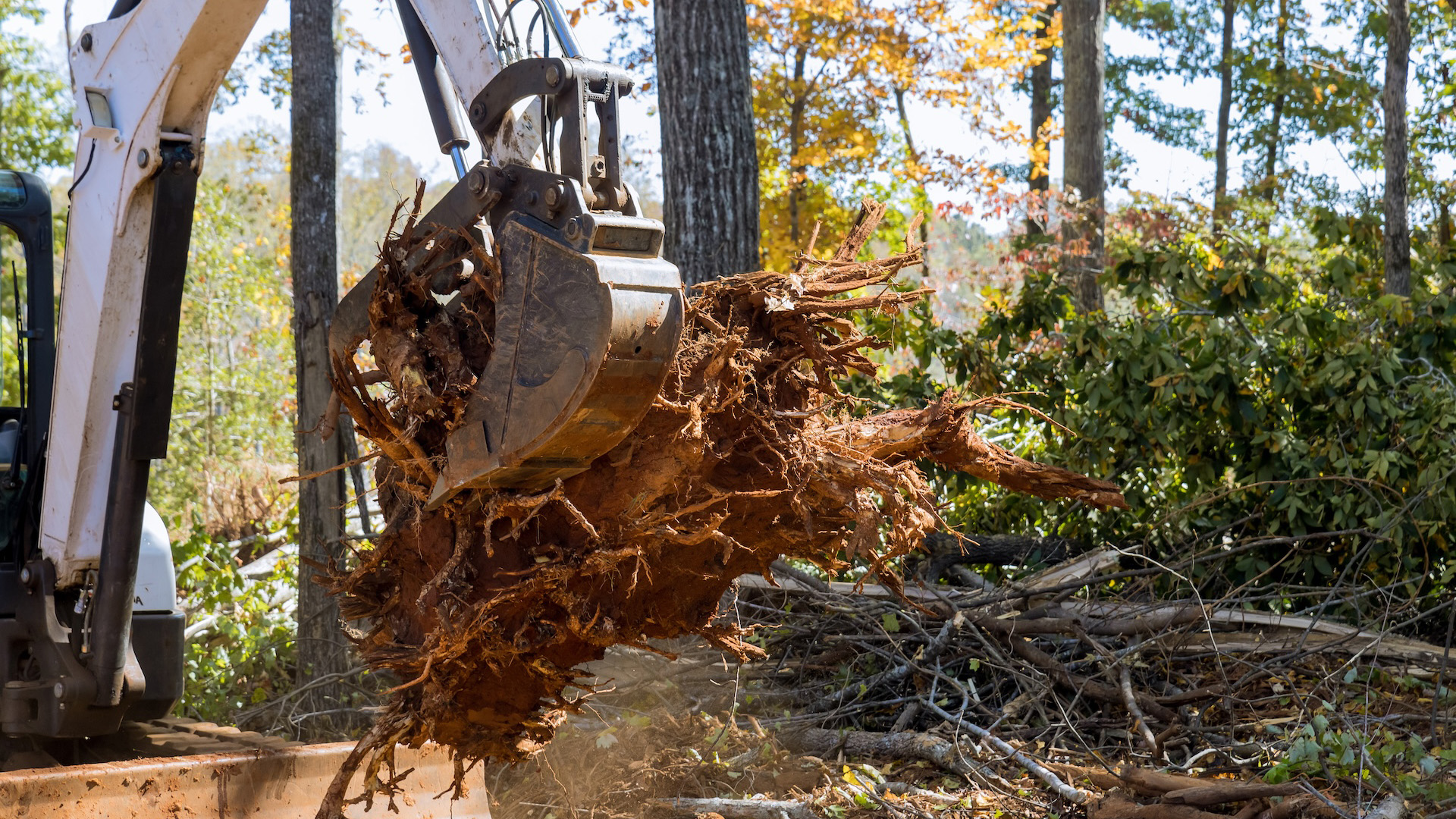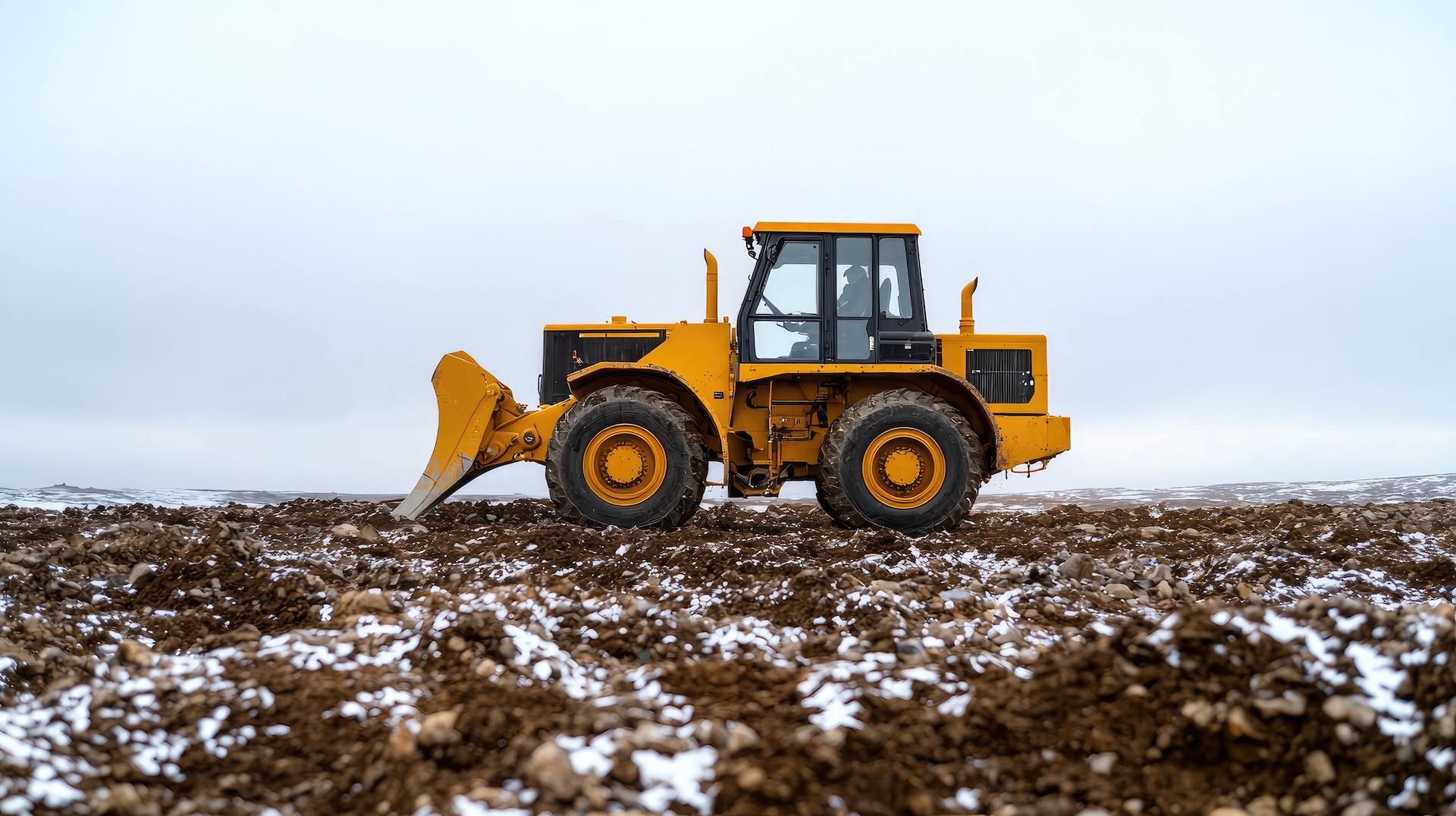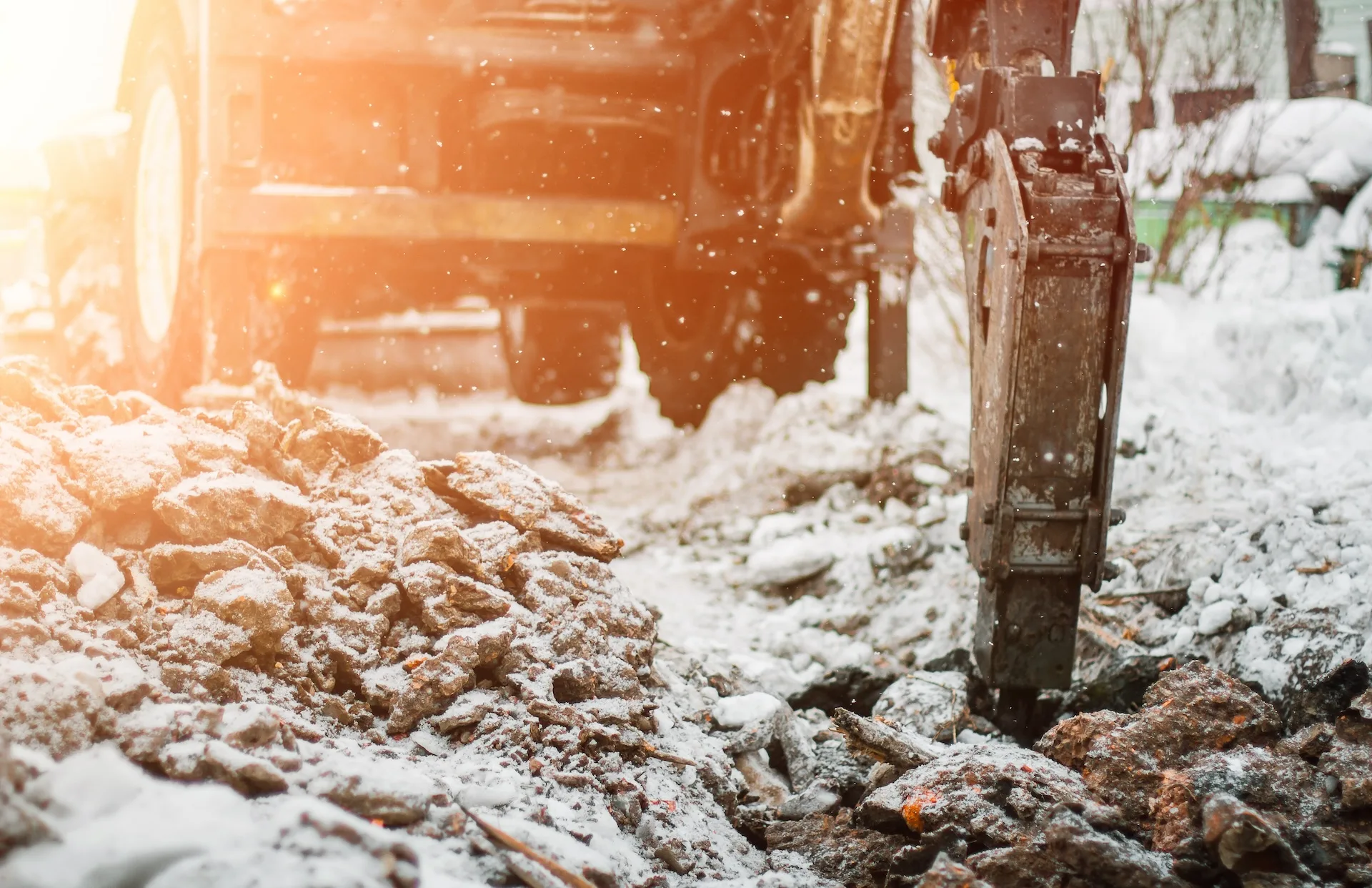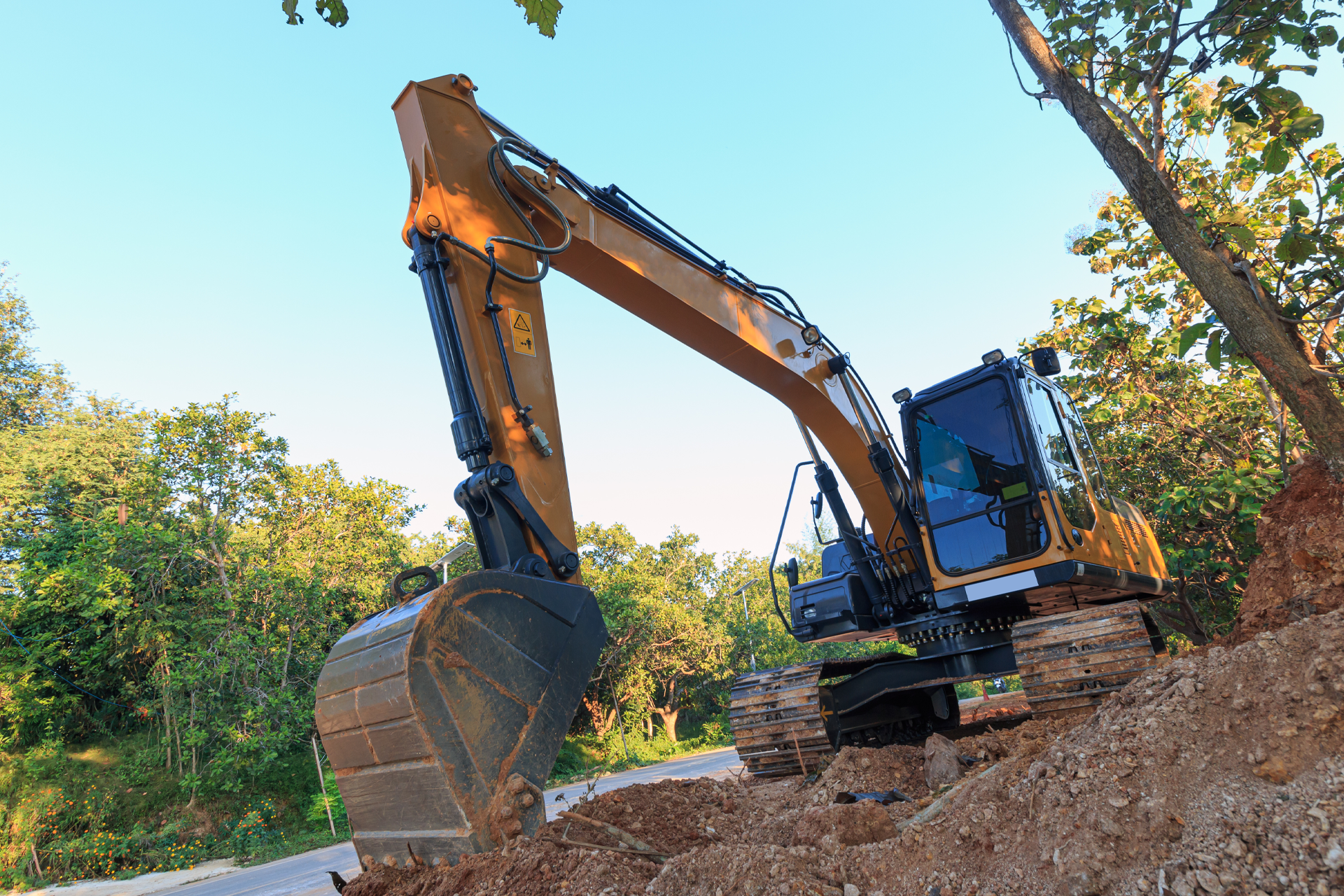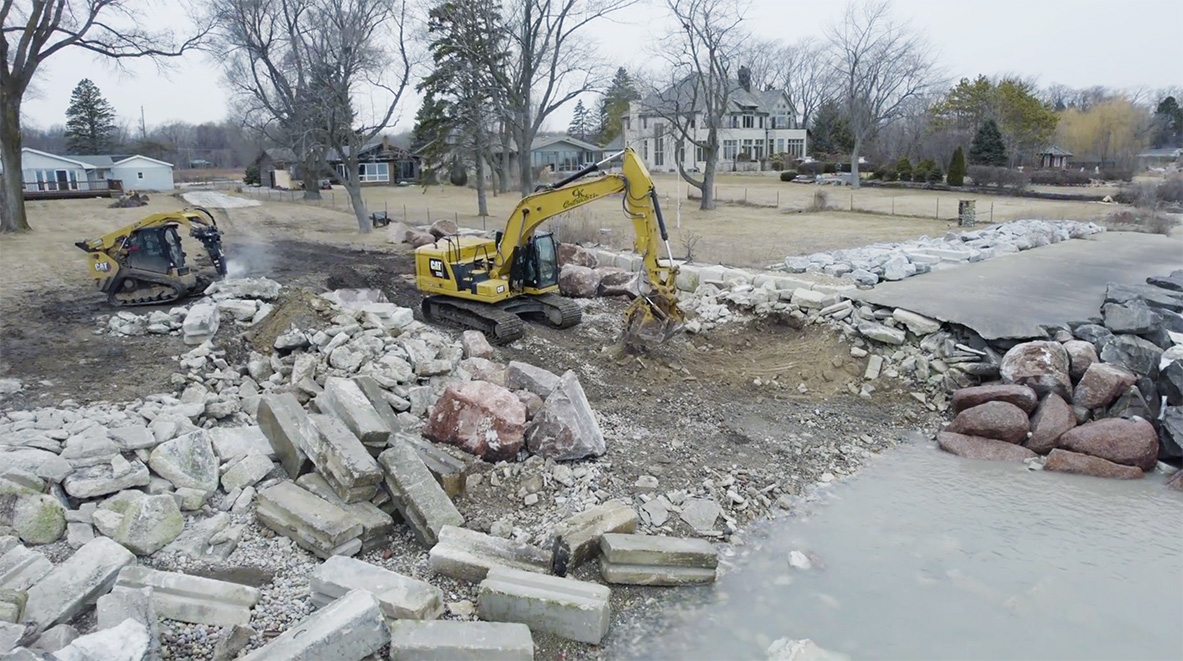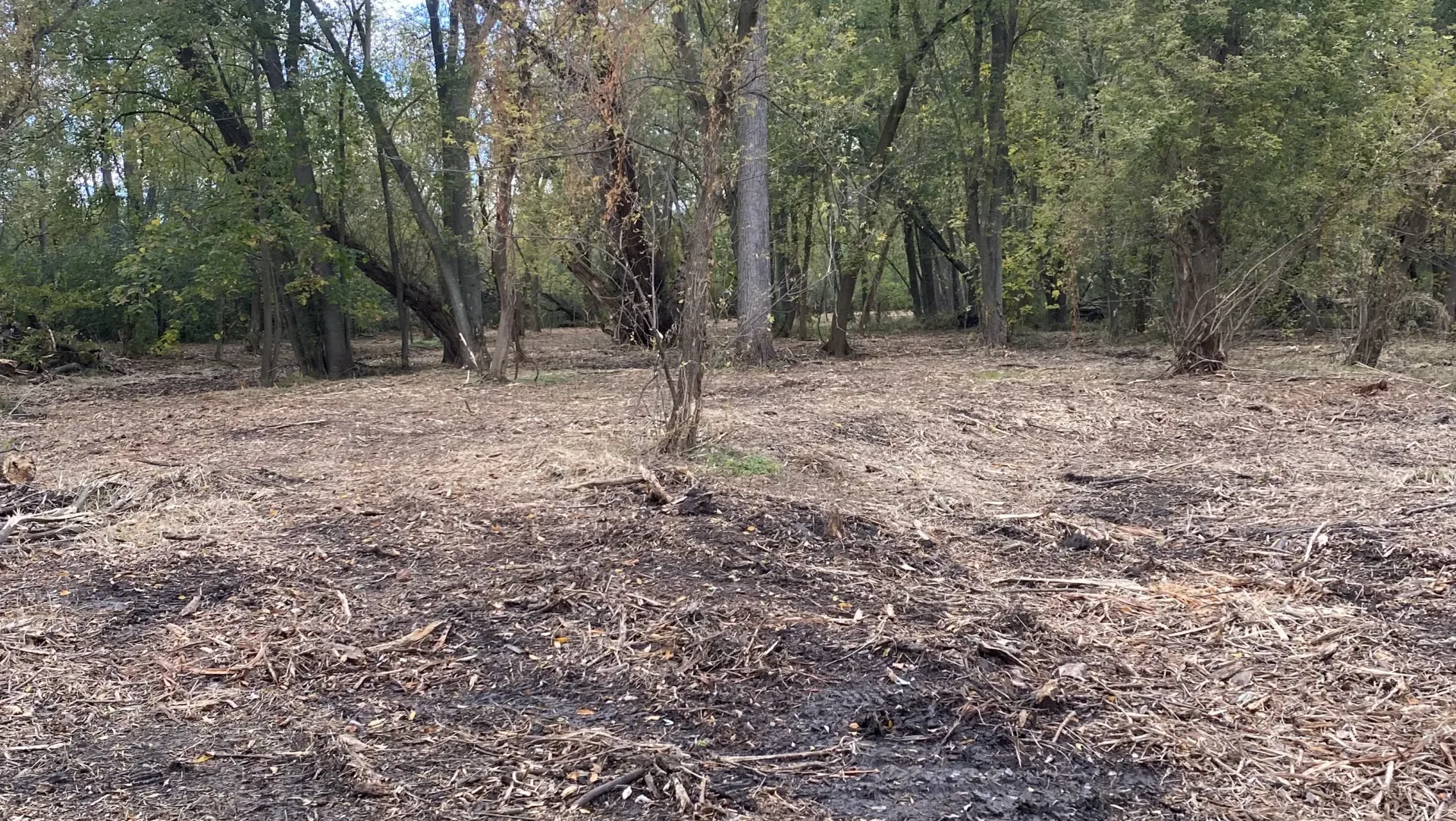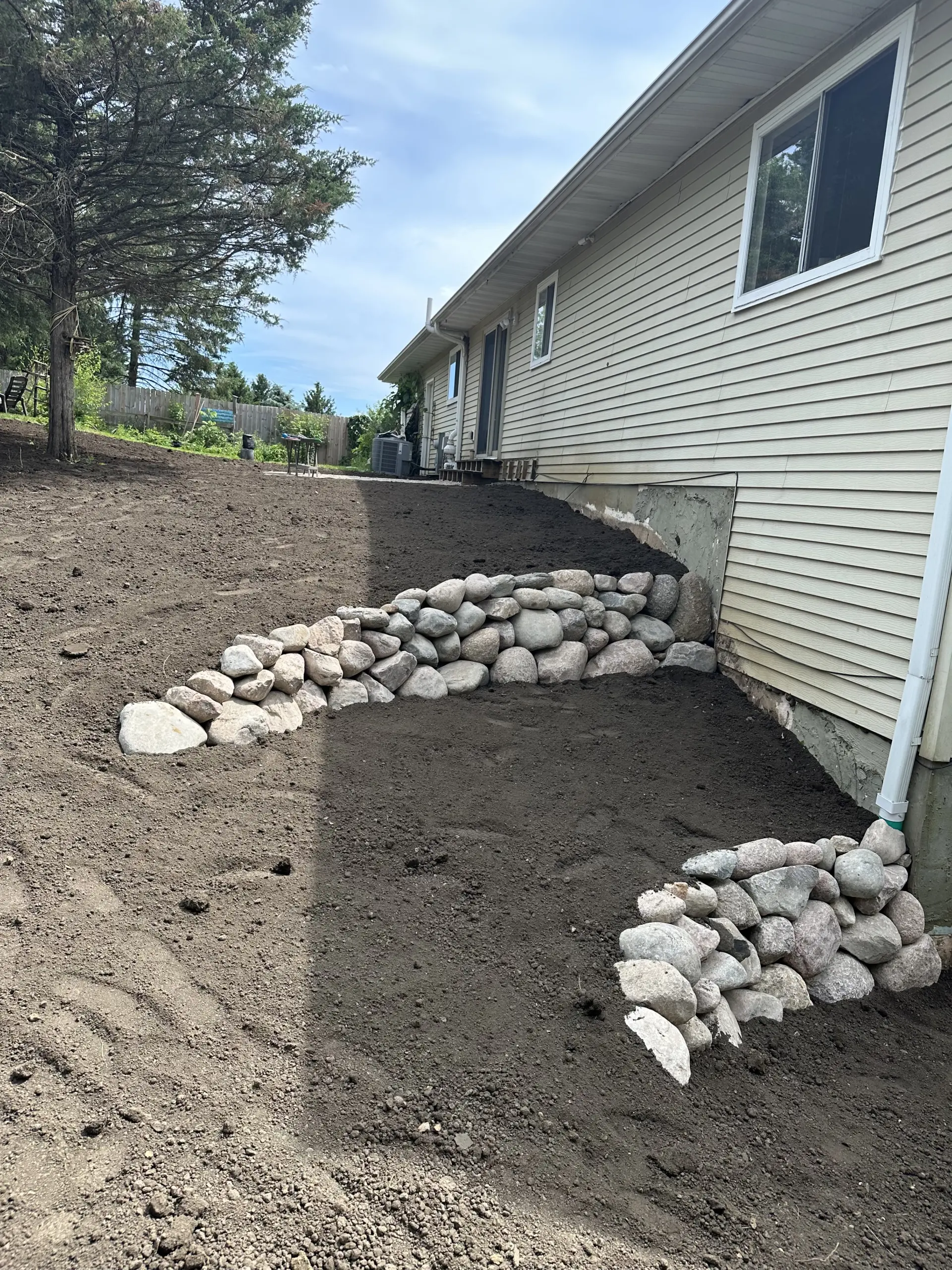Protect Your Home Before Freeze–Thaw Season Hits
As Midwest temperatures drop and soils tighten up, southern Wisconsin’s clay-rich yards face their toughest drainage challenges. Late fall is the ideal window for precise grading, swales, and downspout extensions that move water away from your foundation—reducing ice hazards now and preventing basement seepage during winter and spring thaws. At CK Contractors, we specialize in excavating and grading solutions that are clean, durable, and tuned to local soils.
From foundation-first slopes to smart downspout routing, this guide will help you spot early warning signs and target fixes that make the biggest difference before deep frost.
Why Late Fall is The Smart Time to Fix Drainage
In southern Wisconsin, freeze–thaw cycles turn small puddles and soft spots into winter ice sheets, heaving soils and pushing water toward basements. On clay‑rich glacial soils, common from Dane and Rock Counties east into the Southeast Glacial Plains, surface water lingers longer and hydrostatic pressure builds faster, which is why grading and drainage corrections during the fall will pay off all winter (and for years to come).
Below, we’ll cover freeze–thaw basics, the foundation‑first grading targets we use, simple upgrades that make a big difference, and how we protect your lawn and utilities while we work.
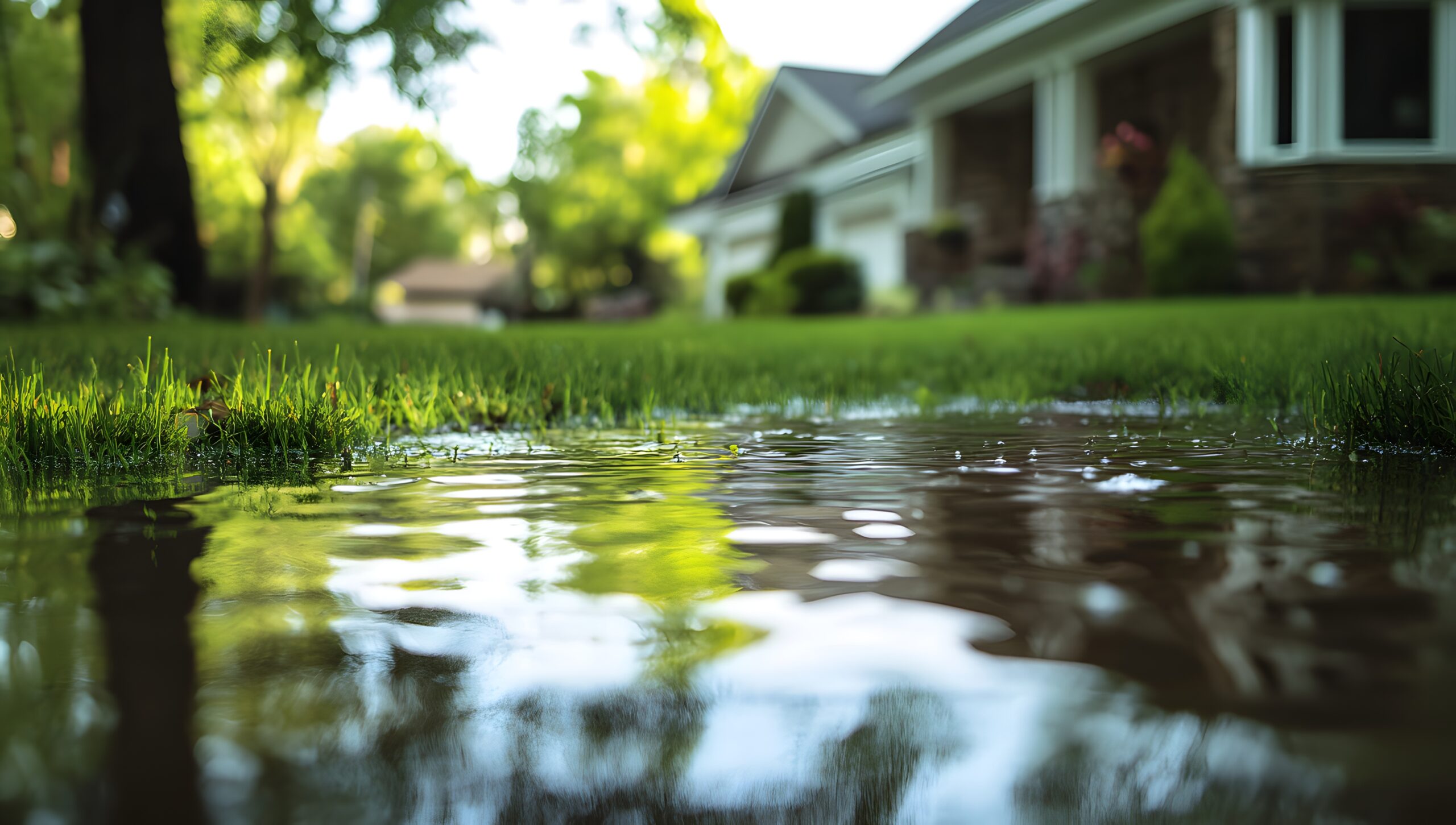
Freeze–Thaw 101: Why Small Ponding Becomes Big Winter Problems
When saturated soils freeze, ice expands and can lift or shift near‑surface soils (frost heave). The wetter the soil before a cold snap, the more ice lenses can grow and the more movement you’ll see. In fine‑grained soils (silts and clays), this process is especially pronounced, stressing foundations and opening pathways for seepage during thaws. The U.S. Geological Survey notes that greater pre‑freeze saturation increases frost heave in susceptible soils—exactly the condition you want to avoid around a house.
What this means at a home scale:
- Ponding near a wall sets up heave in cold and seepage in thaw.
- Repeat cycles widen hairline cracks and can push water through joints and window wells.
- Runoff that can’t get away from the house easily will find its way toward the house.
Bottom line: Drain winter water away from the foundation with slope, swales, and smart routing before the ground locks up.
Foundation‑First Grading: The Targets, Materials, And Compaction That Work
The code‑backed target slope- The International Residential Code (IRC R401.3) sets a simple goal that we use on nearly every project: at least 6 inches of fall within the first 10 feet from the foundation (≈5% slope). If lot lines, walls, or other barriers prevent that much fall, the code calls for drains or swales to ensure water still moves away from the structure. Impervious surfaces within 10 feet must slope at least 2% away from the home.
Clean topsoil vs. clay. We don’t “fix” clay by mixing in a little sand. Instead, we shape the grade with appropriate fill and clean topsoil so we hit the slope target and maintain a durable surface that sheds water toward a safe outlet. (In much of southern Wisconsin, till or loess‑derived soils tend to have finer textures; so we plan accordingly.)
Compaction do’s & don’ts.
- Do compact base lifts so settled ruts don’t re‑create the old ponding pattern in February.
- Don’t over‑compact the top couple of inches—leave a friable topsoil layer so turf establishes and can infiltrate light rains instead of sheeting.
Simple Upgrades That Deliver Outsized Results
Think of these as “small‑but‑mighty” improvements you can still plan and install in late fall.
-
- Swales that actually move water– A swale is a shallow, gently sloped channel that captures and conveys water away from the house to a safe discharge. For residential yards, best‑practice guidance suggests a 3:1 width‑to‑depth shape, a 2%–4% longitudinal slope, and sizing that handles common design storms. Where velocities climb (long runs or steeper sections), we add turf reinforcement or stone at critical points.
- Driveway regrade & apron tuning- Driveway edges can act like a gutter pointed at your garage or basement. We re‑shape gravel or add a subtle asphalt “lip” at the apron so runoff turns toward a swale, not into your foundation trench.
- Downspout management that clears the “splash zone”- Splash blocks alone usually aren’t enough on clay. Connect downspouts to extensions or piping that discharge to a sloping final grade at least 5 feet from the foundation or to an underground catchment at least 10 feet out. That guidance comes from DOE’s Building America Solution Center and aligns with EPA Indoor airPLUS.
- Sump discharge routing- Don’t dump sump water right back into your problem area. We route to daylight or a swale that has positive grade away from structures and walkways, and we prevent winter icing at sidewalks and drives with smart outlets.
CK Contractors on downspouts:
“If your downspouts end two feet from the wall, you’re re‑filling the moat every storm. Get them 5–10 feet out to break the freeze–thaw cycle at the foundation.”
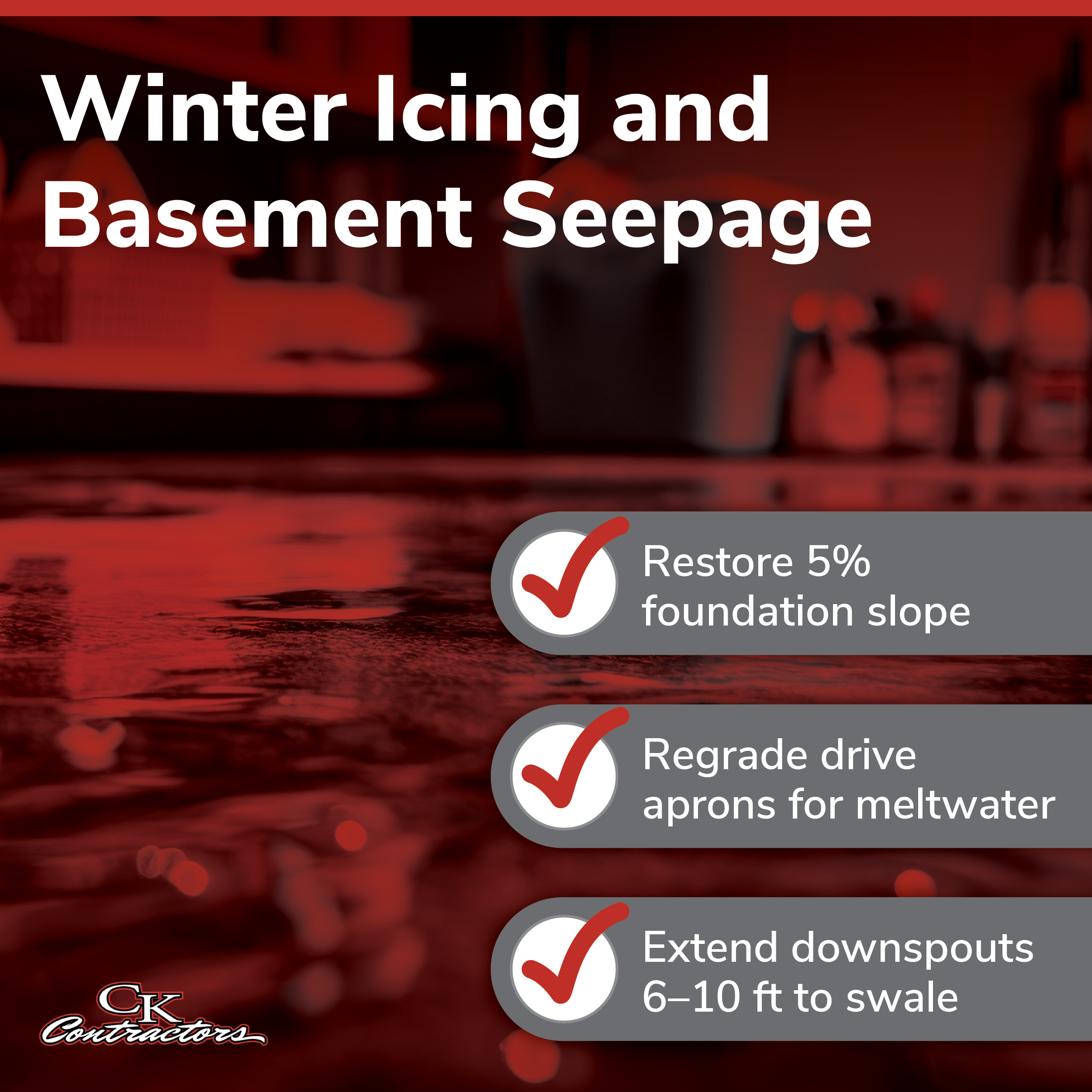
When to Add Drains or Rain Gardens (And When Not to)
- French drains / area drains- We’ll consider piped solutions when slopes are boxed in by lot lines, patios, or walls. Per IRC R401.3, when you can’t get 6 inches of fall in the first 10 feet, drains or swales must be used to carry water away.
- Rain gardens- In the right soil and location, rain gardens clean runoff and relieve your main drainage path. Wisconsin DNR’s technical guidance emphasizes checking separation to groundwater or bedrock (≥1 foot), paying close attention to clay soils, and using deeper‑rooted natives to improve infiltration. We also site rain gardens well away from the foundation and tie them into the broader grading plan so they receive water but don’t back‑flow toward the house.
Utility Locates And Site Protection (811-Call, Lawn Mats, Restoration Plan)
Before any digging, Wisconsin law requires a utility locate request. We handle the ticket with Diggers Hotline (811) so buried lines are marked and safe, no exceptions. Many utilities also remind homeowners to request locates at least three working days before excavation.
On site, we protect turf and hardscape:
- Mats and tracked equipment to minimize rutting and compaction.
- Short, defined access routes and staging on hard surfaces whenever possible.
Realistic restoration baked into the plan (topsoil, seed/straw or sod, and a short maintenance guide).
Planning Checklist to Get You Project Ready
- Take four wide photos around the house plus close‑ups of puddles and downspouts.
- Note drive/gate widths and any tight corners or overhead lines along the likely access path.
During a rain (or right after), mark where water collects and where it should go.
If you’re interested in a rain garden, flag potential spots well away from the foundation and we’ll ground‑truth soils and elevations.
Why This Matters More Here
Southern Wisconsin’s landscape is a patchwork of till plains and loess. In many neighborhoods, that means clay or silt loams that drain slowly, exactly the soils that magnify freeze–thaw issues when water is allowed to linger near the house. A grading plan that meets code, manages roof runoff, and gives water a reliable path away from the foundation is your best insurance against winter heave and spring seepage.
Ready For a Drier, Safer Winter?
Get a free estimate from CK Contractors today. Share a few photos and basic measurements, and we’ll propose the simplest, most durable path to positive drainage:
- Code‑based grading to 6 inches fall in 10 feet (or a drain/swale solution where space is tight).
- Swales sized and sloped to actually carry water—not just look good on paper.
- Downspout and sump routing that clears the foundation “splash zone.”
- Utility location and lawn protection included.
Don’t wait for frost—get your free estimate today. We’ll evaluate your site and provide a precise, line-item quote so you’re ready before winter hits.

